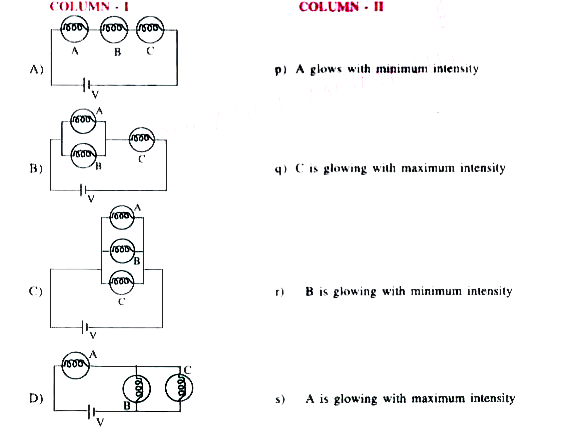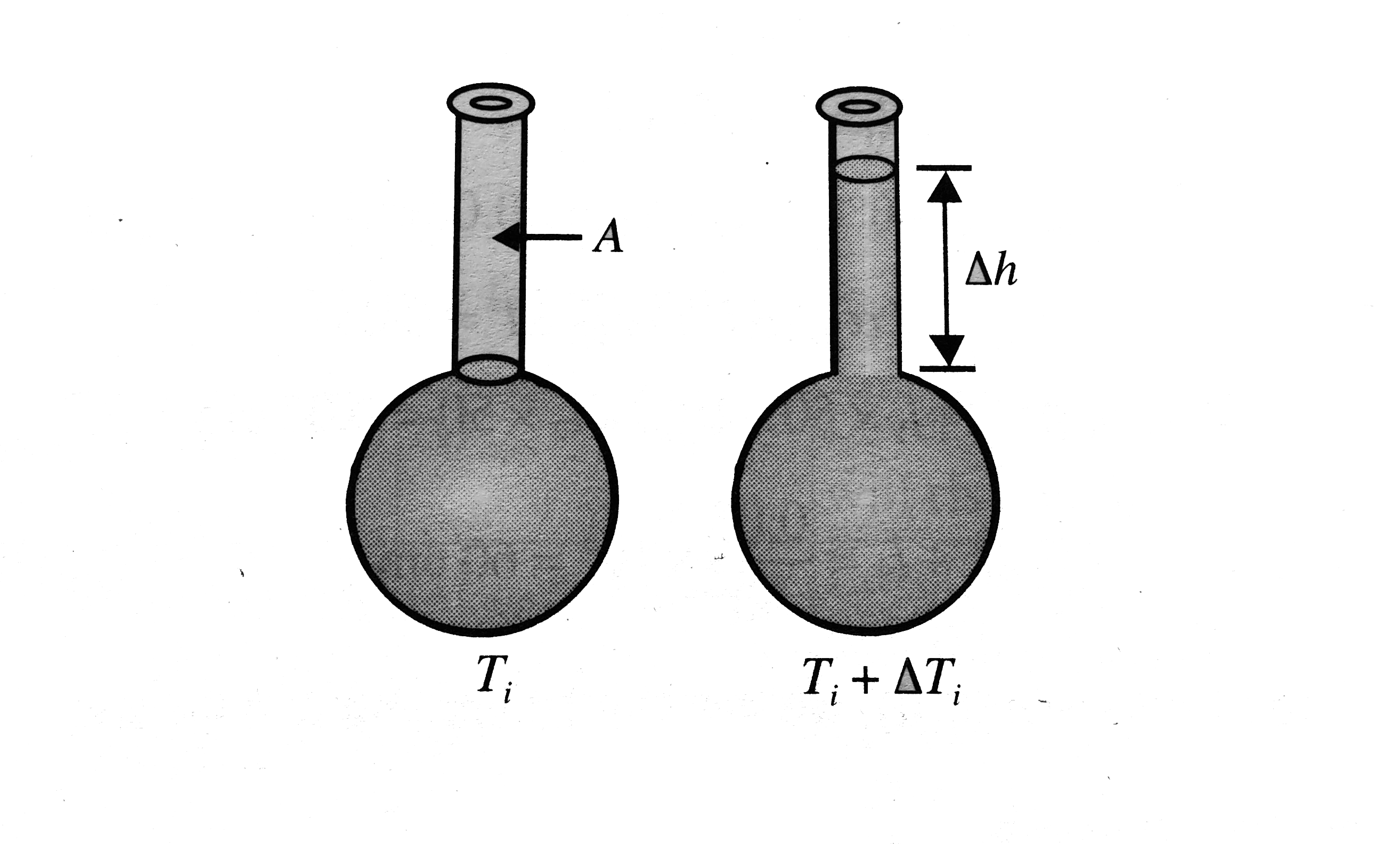Out of two thermometers one with spherical bulb and another with cylindrical bulb, which will respond quickly to temperature changes?
To determine which thermometer responds more quickly to temperature changes between one with a spherical bulb and another with a cylindrical bulb, we can analyze the properties of both shapes.
1. Understanding the Shapes:
- A spherical bulb is round and has a uniform shape in all directions.
- A cylindrical bulb has a longer shape with a larger surface area in contact with the surrounding environment.
2. Surface Area Consideration:
- The rate at which a thermometer responds to temperature changes is influenced by its surface area. A larger surface area allows for more heat transfer between the thermometer and the surrounding environment.
- The formula for the surface area of a sphere is 4πr2, while the surface area of a cylinder (excluding the ends) is 2πrh, where r is the radius and h is the height.
3. Comparing Surface Areas:
- Generally, for the same volume, a cylindrical shape can have a greater surface area compared to a spherical shape. This means that the cylindrical bulb can absorb or release heat more effectively.
4. Conclusion:
- Since the cylindrical bulb has a greater surface area compared to the spherical bulb, it will respond more quickly to temperature changes. Therefore, the thermometer with the cylindrical bulb will measure temperature changes faster than the one with the spherical bulb.
Final Answer:
The thermometer with the cylindrical bulb will respond more quickly to temperature changes due to its greater surface area.
---
- A spherical bulb is round and has a uniform shape in all directions.
- A cylindrical bulb has a longer shape with a larger surface area in contact with the surrounding environment.
- The rate at which a thermometer responds to temperature changes is influenced by its surface area. A larger surface area allows for more heat transfer between the thermometer and the surrounding environment.
- The formula for the surface area of a sphere is 4πr2, while the surface area of a cylinder (excluding the ends) is 2πrh, where r is the radius and h is the height.
- Generally, for the same volume, a cylindrical shape can have a greater surface area compared to a spherical shape. This means that the cylindrical bulb can absorb or release heat more effectively.
- Since the cylindrical bulb has a greater surface area compared to the spherical bulb, it will respond more quickly to temperature changes. Therefore, the thermometer with the cylindrical bulb will measure temperature changes faster than the one with the spherical bulb.
The thermometer with the cylindrical bulb will respond more quickly to temperature changes due to its greater surface area.
Topper's Solved these Questions
- PROPERTIES OF MATTERBook:ICSEChapter:PROPERTIES OF MATTERExercise:MODULE 4 ( TEMPERATURE ) LONG ANSWER QUESTIONS
Explore 10 Videos
- PROPERTIES OF MATTERBook:ICSEChapter:PROPERTIES OF MATTERExercise:MODULE 4 ( TEMPERATURE ) SHORT ANSWER QUESTIONS
Explore 18 Videos
- PROPERTIES OF MATTERBook:ICSEChapter:PROPERTIES OF MATTERExercise:MODULE 3 (KINETIC THEORY OF GASES ) FROM KINETIC THEORY-rms SPEED , TEMPERATURE , PRESSURE
Explore 29 Videos
- OSCILLATIONS Book:ICSEChapter:OSCILLATIONS Exercise:SELECTED PROBLEMS (OSCILLATION IN A TUNNEL BORED THROUGH THE EARTH)
Explore 2 Videos
- SAMPLE QUESTION PAPER - 01 Book:ICSEChapter:SAMPLE QUESTION PAPER - 01 Exercise:SECTION - D
Explore 12 Videos
Similar Questions
Statement I: The bulb of one thermometer is spherical while that of the other is cylindrical . Both have equal amounts of mercury. The response of the cylindrical bulb thermometer will be quicker.
Statement II: Heat conduction in a body is directly proportional to cross-sectional area.
View SolutionStatement I: The bulb of one thermometer is spherical while that of the other is cylindrical . Both have equal amounts of mercury. The response of the cylindrical bulb thermometer will be quicker.
Statement II: Heat conduction in a body is directly proportional to cross-sectional area.
View SolutionThe pressure of a gas filled in the bulb of a constant volume gas thermometer at temperatures 0°Cand100°C are 27.50 cm and 37.50 cm of Hg respectively. At an unknown temperature the pressure is 32.45 cm of Hg. Unknown temperature is -
View SolutionThree bulbs A, B and C having rated power PA,PBandPC, respectively. Each bulb is designed to operate at rated voltage of V volts. It is given that PA>PB>PC. In columnI, different configurtaions of bubls are given while in ColumnII, intensities are mentioned. Match entires of ColumnI with entries of ColumnII, neglecting the change of resistances of bulbs due to temperature change.

View SolutionTwo (non-physics) students, A and B living in neighboring hostel rooms, decided by economies by connecting their bulbs in series. They agreed that each would install a 100 W bulb in their own rooms and that they would pay equal shares of the electricity bill. However, both decided to try to get better lighting at the other's expense, A installed a 200 W bulb and B installed a 50 W bulb. Which student is more likely to fail the end-of--term examinations ?
View SolutionIn which of the following cases the bulb will glow:
(i) Only one terminal of a cell is joined with a metal wire to one terminal of the bulb.
(ii) Both terminals of the bulb are joined with two metal wires to one terminal of the cell.
(iii) One terminal of the cell is joined to one terminal of the bulb and other terminal of the cell to the other terminal of the bulb.
View Solution
A mercury thermometer is constructed as shown if Fig. 1.9. The capillary tube has a diameter of 0.004 00 cm, and the bulb has a diameter of 0.250 cm. neglecting the expansion of the glass, find the change in height of the mercury column with a temperature change of 30.0∘C.
View Solution
A mercury thermometer is constructed as shown if Fig. 1.9. The capillary tube has a diameter of 0.004 00 cm, and the bulb has a diameter of 0.250 cm. neglecting the expansion of the glass, find the change in height of the mercury column with a temperature change of 30.0∘C.
View SolutionAn electric bulb rated '220 V, 60 W' glows when connected with 220 V mains.
Another identical bulb is connected in series with the first one and the system is connected across the 220 V mains. Draw a diagram to show the arrangement and find : (a) the rate of consumption of energy in each bulb, and (ii) total power consumed.
View SolutionIn a constant volume gas thermometer, the pressure of the working gas is measured by the difference in the levels of mercury in the two arms of a U-tube connected to the gas at one end. When the bulb is placed at the room temperature 27.00C, the mercury column in the arm open to atmosphere stands 5.00cm above the level of mercury in the other arm. When the bulb is placed in a hot liquid, the difference of mercury levels becomes 45.0cm. Calculate the temperature of the liquid. (Atmospheric pressure =75.0cm of mercury).
View Solution